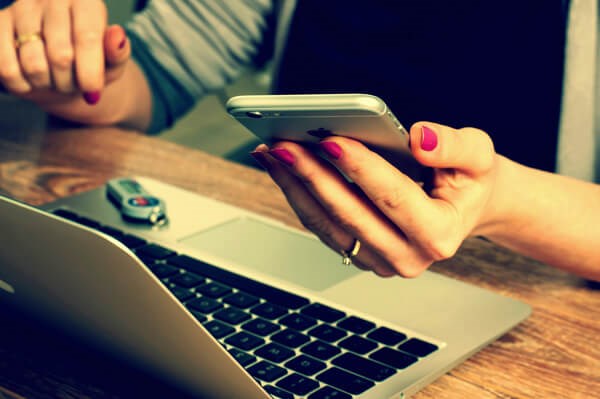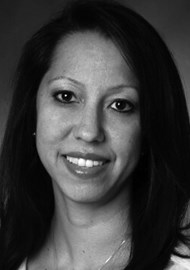When the COVID-19 pandemic hit, it is safe to say very few audiology services were fully prepared for the challenges it would pose. Gina Angley, Associate Director Adult Amplification Program, Vanderbilt University, tells us about her experience of preparing her service for life in a COVID-19 world.
To say life looks a little different these days would be the understatement of the century. Who would have thought a year ago that we would be wearing masks consistently, and advised not to shake our patients’ hands or embrace those certain few we have grown close to over the years? Yet, this is the world we find ourselves in now.
Seven months ago, I was given the task of cancelling a month’s worth of patients for four clinic sites in a matter of three days because, come Monday morning, we would no longer be seeing patients face-to-face until advised otherwise. After seeing as many patients as we could in three days, when my team and I finally had a moment to stop and think about what was happening, we asked each other ‘now what do we do? How do we continue to support those we just fit with hearing aids and those that need hearing aid follow-up care?’ Fortunately for us, there were a few companies we worked with whose hearing aids had the option of synchronous remote care capabilities; however, the tricky part was we were not anticipating a complete shutdown and many of the patients with this capability were not set up to partake in remote care. So now what do we do? We get creative, we learn, and we get to work.

The first of two large hurdles we had to overcome was provider and patient instructions. Understandably, companies must be as vague, yet as specific, as possible in their instruction manuals to capture as many situations as possible. We did not have many situations, though; we had one. I spent about two days reading over the remote care instruction manuals, downloading apps onto my phone and connecting hearing aids to see if I could follow what was written. If at any point in the process there was an issue, I identified what the hiccup was, where it occurred, and a possible solution. I then rewrote and created our own set-up documents. I included pictures, shortcuts, pitfalls to watch out for and how to get out of them if they happened. These were then distributed among the team for review and questions were answered.
“I spent about two days reading over the remote care instruction manuals, downloading apps onto my phone and connecting hearing aids to see if I could follow what was written”
Once we had our documents solidified, we then had to tackle hurdle number two. We needed to remotely set up patients for remote care, but we needed the manufacturer app to conduct a remote care session. This was when we had to get creative and where lots of learning happened. Luckily, our electronic medical record (EMR) system had an option for remote care built into it, so we took advantage of that resource. We also entertained, with permission from the institution, non-secure options, if needed (Facetime, Whatsapp etc.).
Initially, we tried to walk patients through the set-up process over the phone. After several unsuccessful attempts, what we learned was this could not simply be done by explaining things to the patient. Visual aids were needed, especially with patients who were not technologically savvy. We decided we had to schedule patients for remote care appointments using our EMR system and walk them through the manufacturer app set-up. We found ourselves downloading all the available apps onto our personal cell phones and had hearing aids from each manufacturer available to use during a remote care session. We then shared our phone screen with the patients, when needed, or in anticipation of a step that would routinely confuse patients. After seeing several patients this way, we got in a groove and had a better understanding of this process and what to expect. Once we were able to work within the manufacturer’s software and cell phone app, we were back in a world we were familiar and comfortable with.
“Looking to the future and how best to prepare ourselves for any further shutdowns, we are now setting up most of our patients during their trial period with remote care capabilities”
While the struggles outlined above focused on how to set up and provide remote hearing aid follow-up care where programming adjustments were needed, we also used our EMR remote care option to assist with troubleshooting. Pre-COVID, we offered a walk-in clinic, where patients could be seen for hearing aid troubleshooting, purchasing hearing aid supplies, or picking up a repaired hearing aid, to name a few of the services offered. We knew during the shutdown that we wanted to continue offering these services, but again we had to think outside of the box on how to do this. If a patient called in stating they were experiencing a problem with their hearing aid, we would present the option of a remote troubleshooting session. An appointment was then scheduled with an audiologist or technician who would assist the patient during a synchronous remote care session. If it was determined the device needed to be manipulated in some way, the patient was then scheduled with an appointment for a contactless drop-off of their hearing aid or an appointment for our curbside service option.
COVID has definitely taught us to be creative with our service delivery, even beyond remote care. Looking to the future and how best to prepare ourselves for any further shutdowns, we are now setting up most of our patients during their trial period with remote care capabilities. Whether the audiologist chooses to conduct appointments remotely is at their discretion but, should the occasion arise, we are prepared and ready to go.
What I hope you see from my experience, and likely your own experience over the past seven months, is that hearing aid care does not have to be face-to-face as it has traditionally been. Remote care allowed us to stay connected to our patients and available to serve them. I hope you also see, and again understand from your own experience, that we must be creative and think outside of the box during times like these. Be open to new possibilities and get ready to learn!





